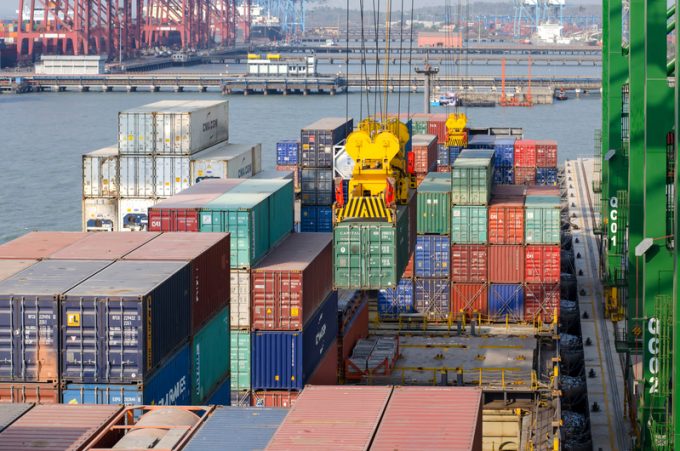Another strong month for US ports as container flows continue to rise
The main US ports enjoyed another stellar month in March, according to new figures from ...

India’s container trade growth has benefited from US-China tariffs, but now New Delhi is teetering on the brink of its own trade dispute with Washington.
According to Maersk’s latest India trade report, China’s decision to replace some US agricultural imports with Indian products helped the country to 6% container trade growth in the fourth-quarter of 2018.
“China inked a protocol with India in Q4 to import fish meal and fish oil from the country, making it one of the key export markets for refrigerated cargo,” the report notes.
“It [fish meal and oil] also became one of the highest contributors to the country’s export basket in Q4 with a 71% year-on-year increase, a trend that is expected to continue, given the recent agreement that enabled ease of access for exports of various farm products [to China], further improving the trade relations between the two nations.”
India’s overall export growth was led by reefer cargo and agro-commodities, the report says, especially vegetables, seafood, fruits, nuts, cereals and rice. Seafood exports saw “unprecedented” growth, with fish the highest exported commodity to China followed by double-digit growth to the US.
On the other hand, it notes, dry cargo exports were “flat”, except vehicles, which saw double-digit growth in volumes.
Naveen Prakash, director of Global Logistics Solutions India, said the boost to auto exports came as Indian manufacturers upgraded vehicle emissions standards to comply with the stricter regulations already enforced in developed markets.
“This increased export orders from western and southern ports of India; while northern ports contributed to the automobile components market,” he told The Loadstar.
Mr Prakash said India’s upgrading of manufacturing standards also led to a sharp uptick in pharmaceutical exports.
For reefer cargo, he noted, the “big jump” in volumes to China was accompanied by “huge demand” in the Middle East, with vegetables, fruits and nuts the leading commodities.
With US$50bn in trade, the US is India’s largest export market. However, it appears President Trump may have found his next “easy to win” trade war target – recently labelling India the “tariff king” and removing it from the Generalised System of Preferences (GSP) this month.
Under GSP, India enjoys duty benefits on exports worth $5.6bn. New Delhi, in the midst of a general election, has threatened to retaliate with tariffs on US products worth $10.6bn.
According to Mr Prakash, India’s “locking of horns” with the US has complicated any benefit it may receive from China’s own difficulties with the Trump administration.
“There is no visible direct benefit now, but it’s clear India needs to join one of the camps in order to benefit, and must decide carefully, as aligning with China will surely cause big increases in container volumes,” he claimed, noting that this was the case for fish exports.
Steve Felder, managing director for Maersk South Asia, said India’s stable trade growth showed it had been able to “sail through” the global trade tensions, as well as the contraction in manufacturing experienced around the world, and the domestic reforms of demonetisation and GST implementation.
“We are witnessing an array of developments in the industry with regard to digitisation, consolidation and infrastructure upgrades which will help propel India as one of the top trading destinations in the world,” Mr Felder added.
Comment on this article